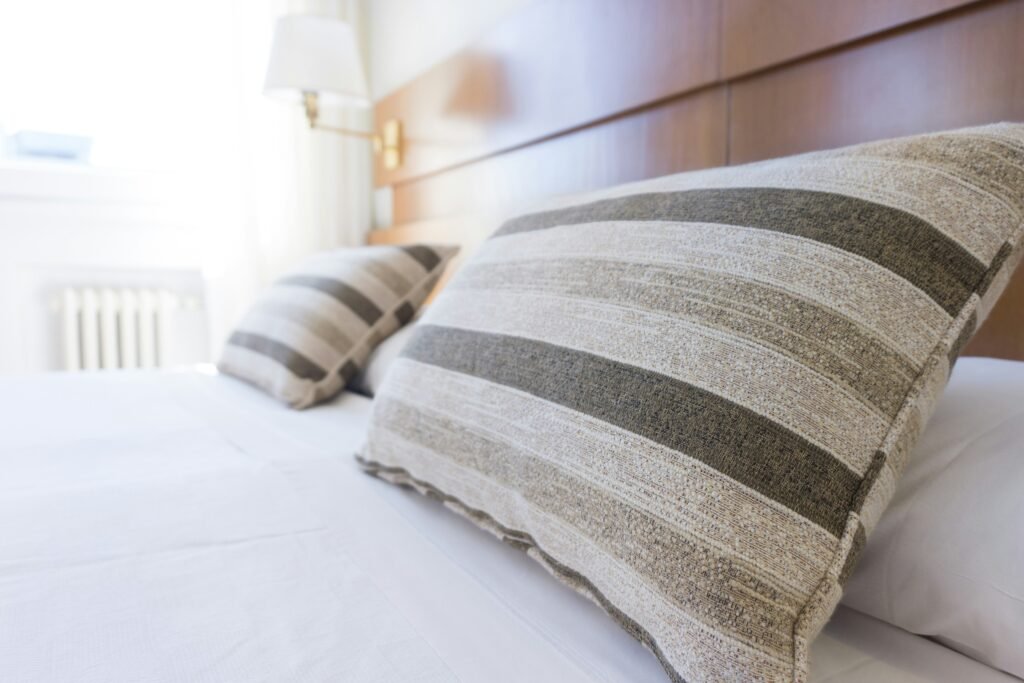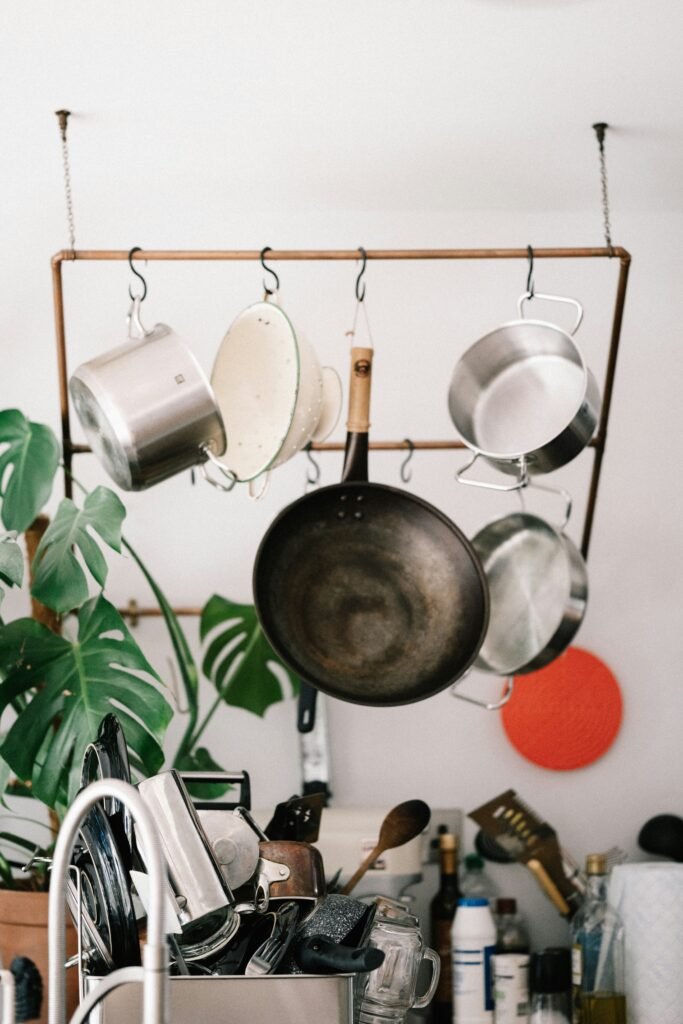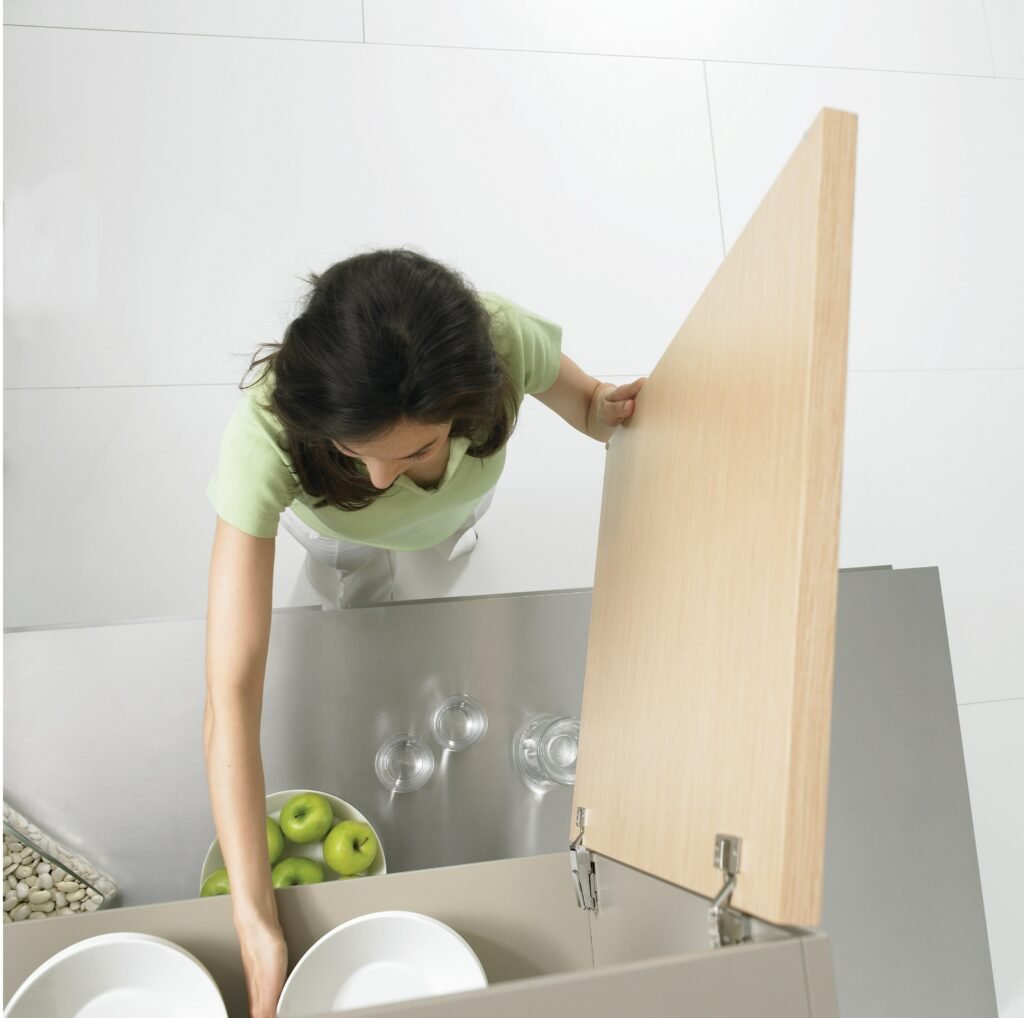If you’re a proud gun owner who values the safety and security of their firearms, then proper maintenance of your used gun safe is crucial. Cleaning and caring for your gun safe not only ensures its longevity, but it also guarantees that your precious firearms are secure and protected. In this article, we’ll explore a range of effective cleaning techniques that will help you keep your used gun safe in mint condition. From eliminating dust and dirt to tackling stubborn stains, we’ll provide you with all the tips and tricks you need to maintain your gun safe’s impeccable appearance and functionality. So, roll up your sleeves and get ready to become an expert in keeping your gun safe in top-notch condition!

This image is property of images.unsplash.com.
Inspecting the Gun Safe
When cleaning and caring for your used gun safe, it is important to start by inspecting the safe for any signs of damage. Look for any dents, scratches, or holes that may have been caused by misuse or mishandling. Pay close attention to the hinges, locking mechanism, and door to ensure they are intact and functioning properly. If you notice any damage, it is best to address it before proceeding with the cleaning process to prevent further issues down the line.
Inspect the locking mechanism
One of the most crucial components of a gun safe is its locking mechanism. Inspect it carefully to ensure that it is in proper working condition. Check if the lock is aligned properly, and try locking and unlocking it to verify its functionality. If you encounter any difficulties or notice any issues with the locking mechanism, it is essential to address them as soon as possible. A faulty lock can compromise the security of your firearms, so it is always better to be safe than sorry.
Inspect the interior and exterior
Before you begin cleaning your gun safe, take a few moments to inspect both the interior and exterior. Check the interior for any loose items or debris that may have accumulated over time. Remove all contents from the safe to ensure a thorough cleaning. As for the exterior, examine it closely for any stains, smudges, or fingerprints. Pay attention to any special coatings or finishes on the exterior, as different materials may require specific cleaning techniques.

This image is property of images.unsplash.com.
Choosing the Right Cleaning Supplies
To effectively clean your used gun safe, it is crucial to choose the right cleaning supplies. Using improper cleaning solutions or abrasive materials can damage the safe’s finish or compromise its fireproofing capabilities. Therefore, it is essential to opt for non-abrasive cleaning solutions specifically designed for the materials used in gun safes. Look for products that are safe to use on metal, wood, and other surfaces commonly found in gun safes.
Select a non-abrasive cleaning solution
When selecting a cleaning solution, it is best to choose one that is non-abrasive. Abrasive cleaners can scratch or corrode the surfaces of your gun safe, potentially compromising its aesthetic appeal and structural integrity. Instead, opt for a gentle, non-abrasive solution that will effectively remove dirt, fingerprints, and other unwanted residues without causing any harm.
Gather microfiber cloths or soft brushes
To ensure a safe and effective cleaning process, gather microfiber cloths or soft brushes. These materials are gentle on gun safe surfaces, preventing scratches or damages while effectively removing any dirt or debris. Microfiber cloths are especially useful for wiping down surfaces, as they have fine fibers that can pick up dirt particles without leaving any streaks or lint behind. Soft brushes are perfect for cleaning hard-to-reach areas or removing dust from crevices.

This image is property of images.unsplash.com.
Use a vacuum cleaner for hard-to-reach areas
In addition to microfiber cloths and soft brushes, consider utilizing a vacuum cleaner for hard-to-reach areas within your gun safe. Attach a small brush attachment to the vacuum cleaner to gently remove dust and debris from corners, hinges, and other areas that may be difficult to clean manually. This method helps ensure a thorough cleaning and prevents any dirt or debris from accumulating in those less accessible spaces.
Cleaning the Exterior
Cleaning the exterior of your used gun safe is an essential part of its maintenance. By keeping the exterior clean and free from stains, you can maintain its appearance and potentially prolong its lifespan. Here are some steps to follow when cleaning the exterior:
Wipe the surface with a damp cloth
Start by wiping down the entire surface of the gun safe with a damp cloth. Ensure the cloth is not soaking wet but slightly damp to avoid excessive moisture on the safe’s surface. This will help remove any loose dirt, dust, or fingerprints that may have accumulated over time. Begin from the top and work your way down, making sure to pay extra attention to areas that are more prone to gathering dirt or dust.
Apply the cleaning solution to remove stubborn stains
If there are any stubborn stains or marks on the exterior, apply the non-abrasive cleaning solution to a clean, soft cloth. Gently rub the affected area in a circular motion until the stain is removed. It is crucial to avoid using excessive force or harsh chemicals, as this can damage the safe’s finish or coatings. Always check the manufacturer’s guidelines before applying any cleaning solutions to ensure they are suitable for use on your specific gun safe.
Dry the exterior thoroughly
After cleaning the exterior, make sure to dry it thoroughly to prevent moisture buildup. Use a clean, dry cloth to wipe away any remaining moisture on the surfaces. This step is particularly important if your gun safe has a metal exterior, as prolonged exposure to moisture can lead to rust or corrosion. Ensuring the safe is completely dry helps maintain its appearance and protects it from potential damage.
Cleaning the Interior
Cleaning the interior of your used gun safe is equally as important as cleaning the exterior. Regular maintenance of the interior helps prevent dust accumulation, removes any potential hazards, and ensures the safe storage of your firearms. Follow these steps to effectively clean the interior of your gun safe:
Remove all contents from the safe
Before cleaning the interior, it is crucial to remove all firearms, ammunition, and other contents from the safe. This step ensures your safety and allows for a thorough cleaning without any obstructions. Make sure to place your firearms and ammunition in a secure location away from the cleaning area, following proper safety protocols.
Vacuum or brush away dust and debris
Once all contents are removed, use a vacuum cleaner with a small brush attachment or a soft brush to remove dust and debris from the interior surfaces of the safe. Pay special attention to the corners, hinges, and any hard-to-reach areas. Gently clean and brush away the dirt particles, ensuring a clean and debris-free interior.
Clean the shelves and compartments
After removing dust and debris, clean the shelves, compartments, and any other interior components of the gun safe. Use a non-abrasive cleaning solution and a soft cloth to wipe down these areas thoroughly. Ensure that the cleaning solution you use is compatible with the materials used in your gun safe to avoid damaging the interior surfaces. Make sure to dry the shelves and compartments completely before reassembling the safe.
Cleaning the Locking Mechanism
The locking mechanism of your gun safe plays a vital role in its security. Keeping it clean and well-maintained ensures the safe and reliable operation of the lock. Follow these steps to effectively clean the locking mechanism:
Use compressed air to remove dust and debris
Begin by using compressed air to blow away any dust or debris that may have accumulated in and around the locking mechanism. This step helps remove loose dirt particles that may hinder the lock’s performance. Be cautious not to use excessive force, as it may damage the delicate components of the locking mechanism.
Apply a lubricant to the moving parts
After removing dust and debris, apply a small amount of lubricant to the moving parts of the locking mechanism. This helps ensure smooth operation and prevents any potential sticking or jamming. Be sure to use a lubricant specifically designed for locks or firearms to avoid damaging the mechanism. Carefully follow the manufacturer’s instructions when applying the lubricant to ensure its effectiveness and longevity.
Test the locking mechanism after cleaning
Once you have cleaned and lubricated the locking mechanism, test it to ensure it is functioning correctly. Lock and unlock the safe several times to check if the mechanism operates smoothly and without any issues. If you notice any difficulties or abnormalities during the testing process, it is essential to address them promptly to maintain the security of your firearms.
Preventing Rust and Corrosion
Preventing rust and corrosion in your gun safe is crucial for maintaining its structural integrity and protecting the firearms stored inside. Here are some steps you can take to prevent rust and corrosion:
Apply a rust inhibitor to metal surfaces
To prevent rust and corrosion on metal surfaces within your gun safe, consider applying a rust inhibitor. Rust inhibitors form a protective barrier that prevents moisture from reaching the metal, reducing the risk of rust formation. Apply the rust inhibitor according to the manufacturer’s instructions and ensure complete coverage of all metal surfaces.
Store moisture-absorbing packets inside the safe
Another effective way to prevent rust and corrosion is by using moisture-absorbing packets inside your gun safe. These packets contain desiccant materials that absorb excess moisture from the air, reducing the chances of rust formation. Place the packets in strategic locations within the safe to ensure maximum effectiveness. Remember to check and replace the packets regularly, as they become saturated over time.
Maintain proper humidity levels in the storage area
Controlling the humidity levels in the storage area surrounding your gun safe is essential for preventing rust and corrosion. High humidity can increase the likelihood of moisture buildup inside the safe, leading to rust formation. Use dehumidifiers or other humidity control devices to maintain optimal humidity levels. It is advisable to monitor the humidity levels regularly to ensure they remain within the recommended range specified by the manufacturer.
Maintaining the Fireproofing
Fireproofing is a crucial aspect of any gun safe, as it helps protect your firearms from the dangers of fire. To ensure the fireproofing capabilities of your used gun safe remain intact, follow these guidelines:
Check the fireproofing rating and guidelines
Start by checking the fireproofing rating and guidelines provided by the manufacturer. Understand the safe’s recommended usage, fire resistance rating, and limits to ensure you are following proper protocols. Familiarize yourself with the safe’s fire seals, insulation materials, and any other fire-resistant components.
Avoid using harsh chemicals on fire-resistant materials
When cleaning the interior or exterior of your gun safe, it is essential to avoid using harsh chemicals on fire-resistant materials. Harsh chemicals can compromise the integrity of the fireproofing materials, reducing their effectiveness. Opt for gentle, non-abrasive cleaning solutions specifically designed for use on fire-resistant materials.
Regularly inspect the fire seals
Periodically inspect the fire seals present on your gun safe to ensure they are in good condition. Fire seals are designed to expand and provide an airtight seal when exposed to high temperatures. Check for any signs of wear or damage, such as tears or cracks, and promptly replace them if necessary. Maintaining properly functioning fire seals is vital for the safe’s fireproofing capabilities.
Securing the Safe
Properly securing your gun safe is essential to prevent unauthorized access and theft. Follow these steps to ensure your gun safe is securely in place:
Ensure proper bolt-down installation
If your gun safe is not already bolted down, consider installing a bolt-down kit to secure it in place. Bolt-down installation helps prevent thieves from stealing the entire safe or easily breaking into it. Follow the manufacturer’s instructions carefully when installing the bolt-down kit to ensure proper placement and stability.
Consider additional security measures
In addition to bolt-down installation, consider implementing additional security measures to further enhance the safety of your gun safe. This can include motion sensor alarms, security cameras, or proximity sensors. Evaluate your specific security needs and consult with a professional to determine the best options for your gun safe.
Regularly change the combination or password
Changing the combination or password of your gun safe regularly adds an extra layer of security. It prevents unauthorized individuals from gaining access to the safe and its contents. Choose a combination or password that is not easily guessable and update it periodically to ensure maximum security.
Regular Maintenance
Regular maintenance is key to keeping your used gun safe in optimal condition. Establishing a cleaning schedule and following through diligently will help extend its lifespan and ensure its reliable performance. Here are some maintenance practices to follow:
Create a cleaning schedule
Create a cleaning schedule for your gun safe based on its usage and environmental factors. Consider how frequently you use or access the safe, as well as the surrounding conditions such as humidity and dust levels. Establishing a regular cleaning schedule will help you stay on top of maintenance tasks and prevent any issues from escalating.
Inspect the safe periodically
Periodically inspect your gun safe to identify any signs of damage or issues that may require attention. Check for loose hinges, dents, or malfunctions in the locking mechanism. Look for any changes in the safe’s appearance or functionality and address them promptly to prevent further damage or security risks.
Maintain a record of maintenance activities
Maintaining a record of your gun safe’s maintenance activities can help you track the cleaning schedule, repairs, and other relevant information. Keep a log of when the safe was cleaned, any maintenance performed, and any issues encountered. This record can serve as a reference for future maintenance and help you identify any recurring problems that may require professional assistance.
Seeking Professional Assistance
While regular maintenance can go a long way in keeping your used gun safe in good condition, certain issues may require professional assistance. Here are some instances where it is advisable to seek professional help:
Contact the manufacturer for specific guidelines
If you encounter any issues or have concerns about the maintenance of your gun safe, it is best to contact the manufacturer directly. They can provide you with specific guidelines and troubleshooting steps tailored to your particular safe model. Following the manufacturer’s instructions ensures that you do not inadvertently void any warranties or cause further damage during the maintenance process.
Consult a locksmith or safe technician
If you are experiencing difficulties with the locking mechanism or other complex issues, it may be necessary to consult a locksmith or safe technician. These professionals have the expertise and tools required to diagnose and repair any problems effectively. They can also provide valuable advice on proper maintenance and security measures to ensure the longevity and optimal performance of your gun safe.
Seek professional servicing for complex issues
For complex issues that cannot be easily resolved, it is recommended to seek professional servicing. Whether it’s electrical malfunctions, structural damage, or fireproofing concerns, professional technicians can provide the necessary expertise to address these issues safely and efficiently. Do not attempt to repair such issues yourself, as it may lead to further damage or compromise the overall security of your gun safe.
In conclusion, cleaning and caring for your used gun safe is essential for maintaining its appearance, functionality, and security. By thoroughly inspecting the safe, choosing the right cleaning supplies, and following the recommended cleaning techniques, you can keep your gun safe in optimal condition. Preventing rust and corrosion, maintaining fireproofing, securing the safe, and performing regular maintenance are all key factors in ensuring the long-term reliability and safety of your gun safe. If in doubt or experiencing complex issues, don’t hesitate to seek professional assistance. By dedicating time and effort to cleaning and caring for your used gun safe, you can enjoy peace of mind knowing that your firearms are stored safely and securely.
